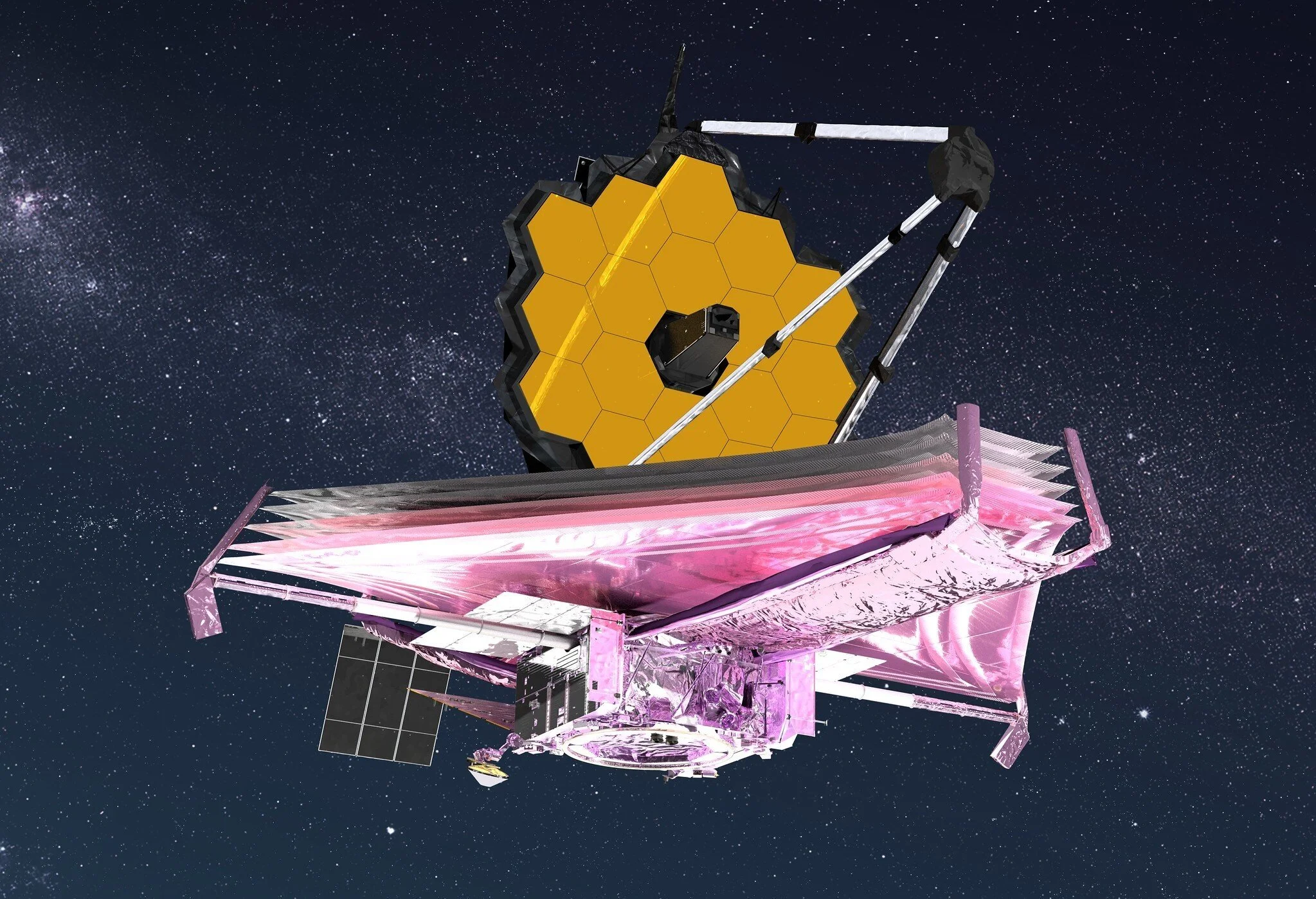There are few things in the Solar System more iconic then Jupiter's Great Red Spot, that swirling vortex staring out from the giant planet like a huge eye. Ever since Cassini (or was it Hooke?) first spotted it back in the late 17th century, it's been an object of fascination for astronomers and amateur stargazers alike. New research shows the spot is not only shrinking, it's speeding up — but why? What's going on? What even is this thing anyway? Emily's got all the answers.
83: James Webb Set For Launch (Honestly!)
We've been waiting. And waiting. And ... waiting. Finally — *finally!* — the James Webb Space Telescope is ready for launch on 18 December this year. Which is Chris's birthday, so things better go smoothly or he'll be pretty upset. Emily explains why this is a momentous event for astronomy, and what we hope to get from this amazing bit of astronomical engineering.
82: Billionaires In Space!
Branson's done it. Bezos is going to do it. Elon's doing it for sure, if only to find out where he parked his car. All the rich kids are heading to space — but where is that, exactly? How high to you have to go to actually get into the astronaut club? Emily and Chris go over the first Virgin Galactic fully-populated flight, and discuss where space may or may not begin — and what it means when really rich people decide they want to be astronauts.
81: To Infinity And Beyond!
Live and online at the York Festival of Ideas 2021, Emily and Chris discuss infinities. Is the Universe infinite? What does that even mean? Does it go on forever in all directions? Does it bend back on itself? Is it a multidemonsional doughnut or saddle? And will it last forever? How big is infinity, anyway?
80: Mapping the Unseeable
Hundreds of scientists have carried out the largest survey of dark matter in the universe, and released the first tranche of results. It's a staggering bit of research, involving observations 100 million galaxies with some of the finest astronomical imaging gear on the planet. And guess what? Einstein was wrong! Or, well, that's what some headlines screamed. The reality is a little more nuanced: there are some intriguing discrepancies between models and experiments, and lots more work to do.
79: Voyager Hears A Hum
Our farthest-flung object, little Voyager 1, is still hurtling through the cosmos, 21 light hours away in interstellar space. And decades into its mission it's still measuring stuff! Voyager 1 sent back measurements of the background hum of the interstellar medium, the incredibly diffuse plasma that fills the void between our solar system and the next.
78: Muons broke my physics!
An esoteric particle called the muon wobbles weirdly in a magnetic field, and physicists around the world go a frothing frenzy of excitement ... because maybe these wobbles mean new physics! The experiments at Fermilab and Brookhaven labs disagree quite firmly with theoretical calculations, which is exciting. And because new physics can be tested with modern astronomy — sometimes it's the only way we can explore the boundaries of the theories of the universe — then Emily is keen to understand just what's going on. So maybe we've just seen signs of new forces, new particles, even supersymmetry ... but then again, maybe not.
77: A Night In The Life Of An Astronomer
Emily is up a mountain in New Zealand, observing stars and doing astronomer-y things. Or, she would be, if the weather was behaving better. In this episode, recorded on site at the University of Canterbury's Mount John Observatory in the heart of NZ's gorgeous South Island, we find out just what astronomers get up to when they're shut up with their telescopes, working by night and sleeping by day, trying to glean cosmic secrets through gaps in the clouds.
76: Everybody's Going To Mars
China's doing it. The United Arab Emirates are doing it. The USA as well, of course they're on it as well — seems everyone is going to Mars these days. Emily takes a good hard look at each of the current Mars missions, from an orbiting spacecraft examining the red planet's weather, to a couple of rovers, one dropped to the surface by sky crane. There's even a tiny helicopter! it's all happening on Mars in 2021.
75: Story of the Sun
The Sun, our star. So easy to take for granted. But it's had an interesting few billion years so far, with several billion more to go. Emily tells the story of the Sun from dust cloud rocked by a supernova shock wave, to violent childhood, to boring middle age, to giant red puffer fish phase, and finally to beautiful planetary nebula illuminated by a white-hot stellar core, slowly fading away.











